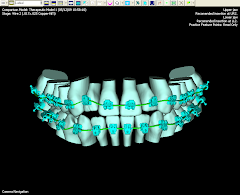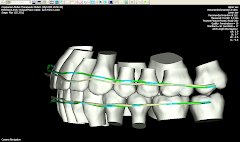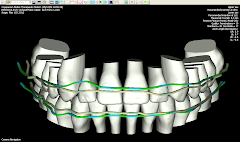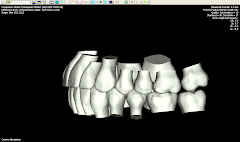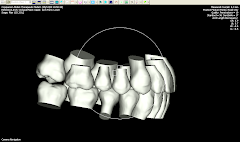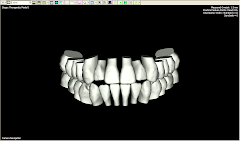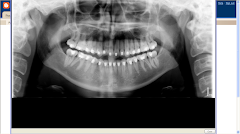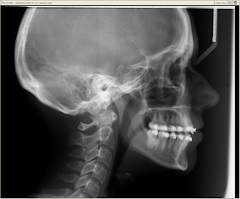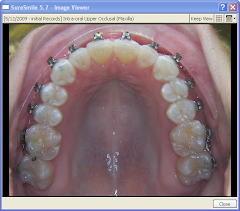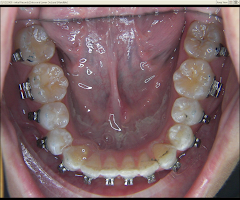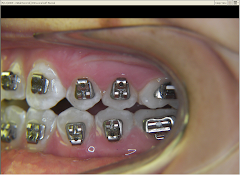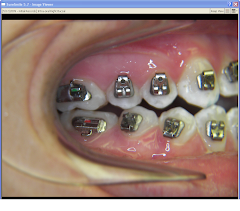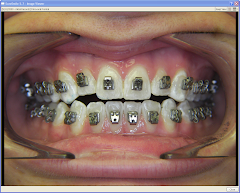Tuesday, June 2, 2009
Note the design of the occlusion with the upper post control and no movement of the upper 6's and intrusion of the upper 7's in the design. I have compensated all torque movements and will talk about this at our next meeting. I am finishing the vertical movements in all teeth before I add torque. That way I can go back to the vertical setting on the bkt displacement tab after I add the torque. This will almost always be correct.
This post should have been first. The patient started on May 12 with the .016 cuniti wires. She had her SS wire placed (wire 2) on May 25th. She is wearing 1/4 inch 2.5 oz elastics in a class II vector. upper 3-4 and lower 4-5. She will return on or about June 19 for her next visit and I will evaluate. I did IPR in the lower canine and premolar areas and the lower incisor area. I will need that space as you can see the overlap of the canines and first premolars. Please comment on this case and how you would handle it. EW is going back to school in August and I plan to deband her in late July.
The patient started with .016 copper niti wires and went directly to SS wires at her last visit. I ordered three wires for this case at the start of tx. Wire 1 is the plan wire with slot fill and a slight modification of the wire. I added intrusion of the upper and lower 7's of .2 mm and did .1 mm intrusion of all 4 6's. This is a control feature for open bite cases and it is something I just started with these cases. It makes sense. Wire 2 is a copy of wire 1 with extrusion of the upper and lower 3 to 3 of .5 mm. This is the wire I placed at the second appt. Wire 3 is a 16X22 version of wire 2 (upper only). I thought I might need it due to the amount of the upper extrusion but decided not to use it.
Friday, May 8, 2009
Welcome to SureSmile ACE Chicago Group
SureSmile ACE Chicago Group Blog, Exclusively for SureSmile ACE Chicago Group Doctors
Subscribe to:
Posts (Atom)

